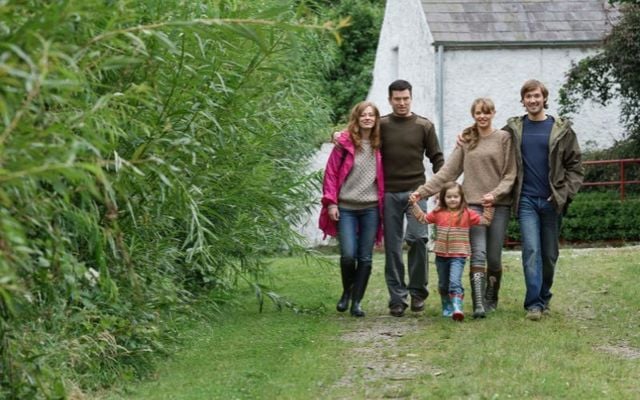Ireland's Central Statistics Office (CSO) revealed the top surnames of babies' registered in 2022 by number.
The top ten surnames accounted for 7.2% (or 4,118) of the 57,542 live births in 2022, the CSO said in February 2022.
The top three surnames for babies in 2022 were Murphy at 648 (1.1%), Kelly at 556 (1.0%) and O’Brien at 441 (0.8%).
Read on to learn more about Ireland's most popular surnames of 2022!
1. Murphy – The Sea Battlers
Murphys – you win the prize for the most common last name in Ireland, especially in County Cork.
This surname, which means “sea battler,” translates to Irish as MacMurchadh (son of Murchadh) and O'Murchadh (descendent of Murchadh), a derivation of the first name of Murchadh or Murragh.
O'Murchadh families lived in Wexford, Roscommon, and Cork, in which county it is now most common, with the MacMurchadhs of the Sligo and Tyrone area responsible for most of the Murphys in Ulster.
The name was first anglicized to MacMurphy and then to Murphy in the early 19th century.
2. Kelly– The Bright-Headed Ones
Kelly comes second to Murphy as the most common last name in Ireland.
The Kellys are all over Ireland; the name originates from around 10 unrelated ancient clans or septs. These include O'Kelly septs from Meath, Derry, Antrim, Laois, Sligo, Wicklow, Kilkenny, Tipperary, Galway and Roscommon.
O'Kelly comes from the Irish O Ceallaigh, meaning "descended from Ceallach," an Irish chieftain. “Ceallach” means war or contention. It is an ancient first name that is no longer used as a first name in Ireland. However, Kelly is a popular first name for women in the U.S.
3. O'Brien – The Noblemen
O’Briens are pretty lucky – they are descended from one of the greatest and most famous Irish kings.
The name O’Brien, also spelled O'Bryan or O'Brian, translates to Ó Briain in Irish, which means "of Brian.”
The name indicates the family is descendants of Brian Boru, the celebrated High King of Ireland. This gives O’Briens leave to call themselves “high” and “noble.”
Most O’Briens can be found in counties Clare, Limerick, Tipperary and Waterford.
4. Byrne – The Ravens
Byrnes can be found flying around all over counties Wicklow and Dublin, where it is one of the most common last names.
Byrne, originally O’Byrne, comes from the Irish O'Broin meaning "descended from Bran,” an 11th-century King of Leinster.
The O'Byrnes were chieftains of what is now County Kildare until the Norman invasion when they were driven from their lands and migrated (ha!) into the mountains of County Wicklow.
There, together with their allies the O'Tooles, they successfully resisted Norman and English domination for centuries.
5. Walsh – The Welshmen
The meaning of this “Welsh” name is pretty straightforward.
The name Walsh is one of the most common of the Norman-associated names found in Ireland. It seems to have been the name used by the many different groups of Welsh people who arrived in Ireland with the Normans during the 12th century.
The name comes from Welsh, which simply means Welshman and its early Norman form was "Le Waleys." But this became gradually anglicized to Walsh.
6. Ryan – The Little Kings
The meaning of the Irish name Ryan comes from the old Gaelic word "righ" and the old Irish diminutive of "an," which together form the meaning of "little king."
The name Ryan comes from the Irish name O'Riain – a contraction of the older Irish form O'Mulriain, which is now virtually extinct.
7. O'Connor – Patrons of Warriors
They might not be warriors themselves, but at least O’Connors descend from them!
The O'Connor name, with its varied spellings, doesn't spring from a common source. The name arose in five areas of Ireland: Connacht, Kerry, Derry, Offaly, and Clare and split into six distinct septs.
The most prominent sept is that of the Connacht O'Connors who gave us the last two High-Kings of Ireland: Turlough O'Connor (1088-1156) and Roderick O'Connor (1116-1198). They trace their heritage and name from the Irish "Ua Conchobhair," meaning Conchobhar, a king of Connacht.
8. O'Sullivan – The Hawkeyed Ones
Kellys may have bright heads, but O’Sullivans have hawk-like eyes.
The O'Sullivans or Sullivans are one of the most populous of the Munster families. In Irish, O'Sullivan is O'Suilleabhin, and there is no doubt that the origin of the name comes from the word súl (eye), though whether it is to be taken as "one-eyed" or "hawkeyed" is in dispute among scholars.
Originally lords of the territory around Cahir, County Tipperary in the 12th century, they migrated to what is now west Cork and south Kerry, where the name is still very prominent.

Love Irish history? Share your favorite stories with other history buffs in the IrishCentral History Facebook group.
9. O'Neill - From Niall of the Nine Hostages
The O'Neill family traces its history back to 360 A.D. to the legendary warrior king of Ireland, Niall of the Nine Hostages, who is said to have been responsible for bringing St. Patrick to Ireland.
Niall is also said to have been incredibly fertile – he has three million descendants worldwide!
“O’Neill” is derived from two separate Irish words, "Ua Niall," which means grandson of Niall, and "Neill" meaning "champion."
Ireland’s O'Neills were known by the nickname "Creagh," which comes from the Gaelic word "craobh" meaning "branch" because they were known to camouflage themselves to resemble the forest when fighting the Norsemen. Crafty fellows, those O’Neills.
10. McCarthy
The name McCarthy originally appeared in Gaelic as Mac Carthaigh, which is derived from the word "carthach," which means "loving." It first appeared in Co Kerry, later in Co Cork, and remains popular in Munster today.
* Originally published in 2022, updated in Sept 2024.




Comments